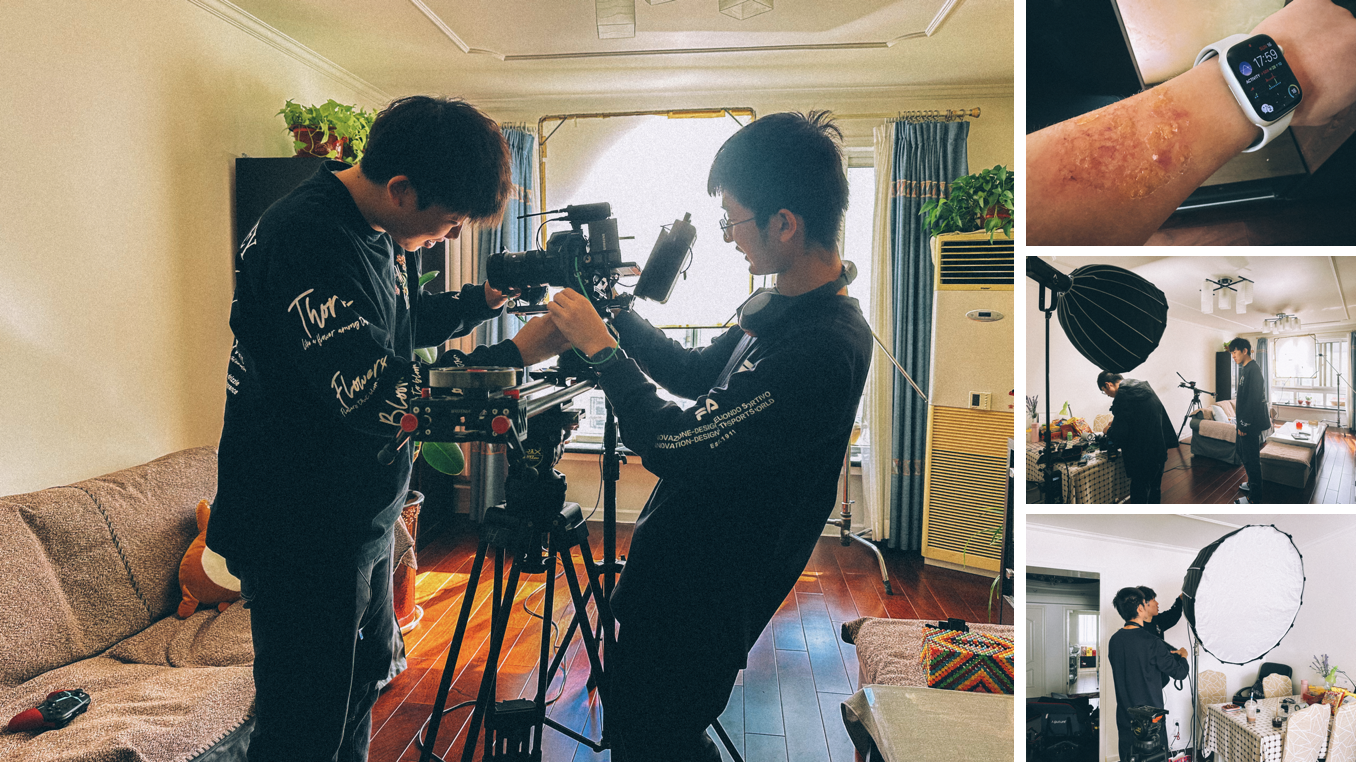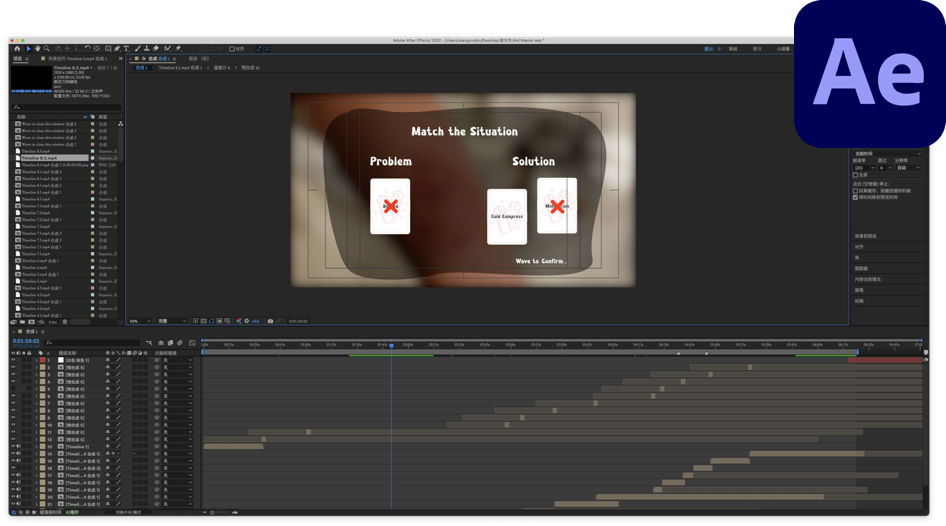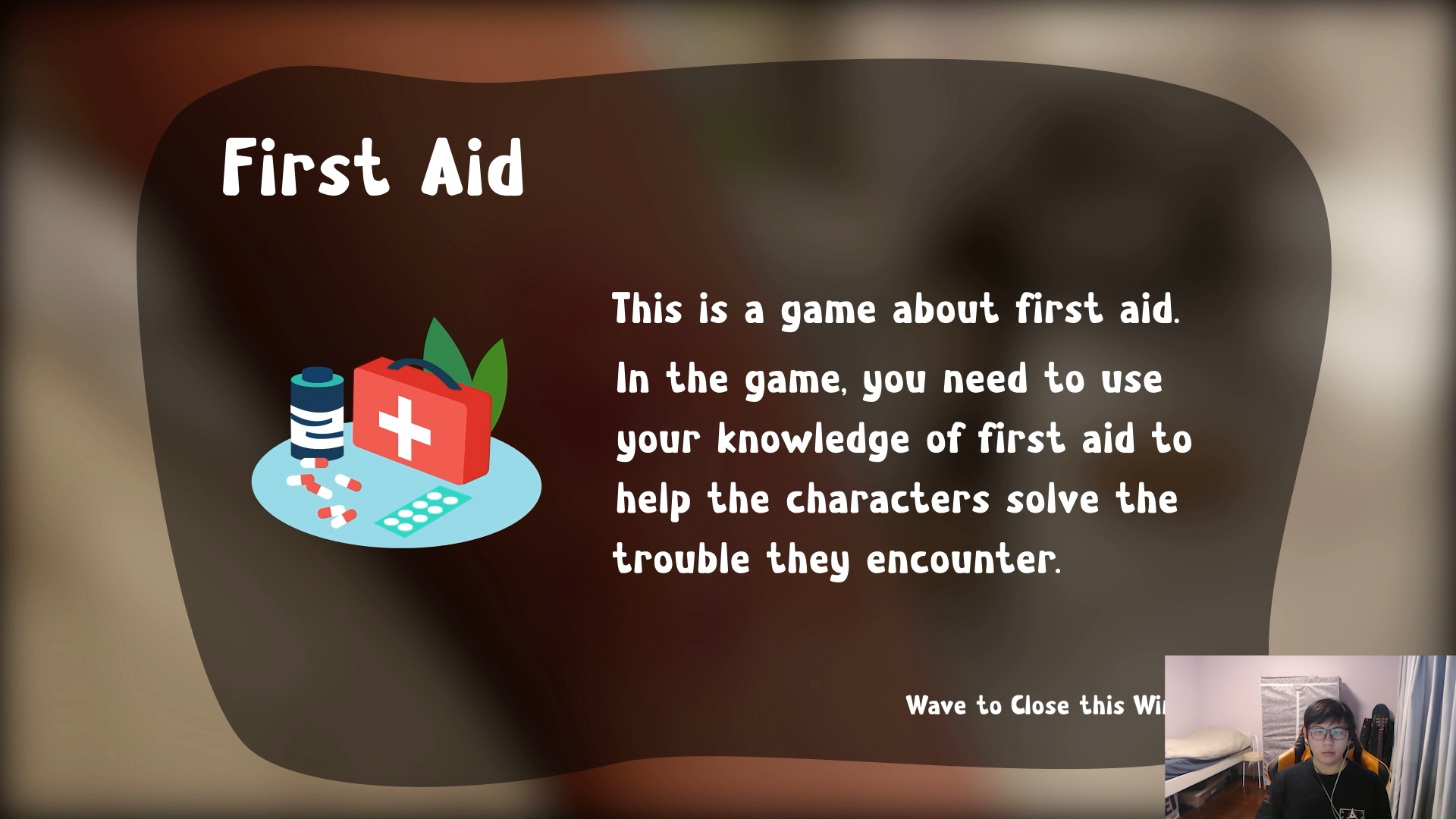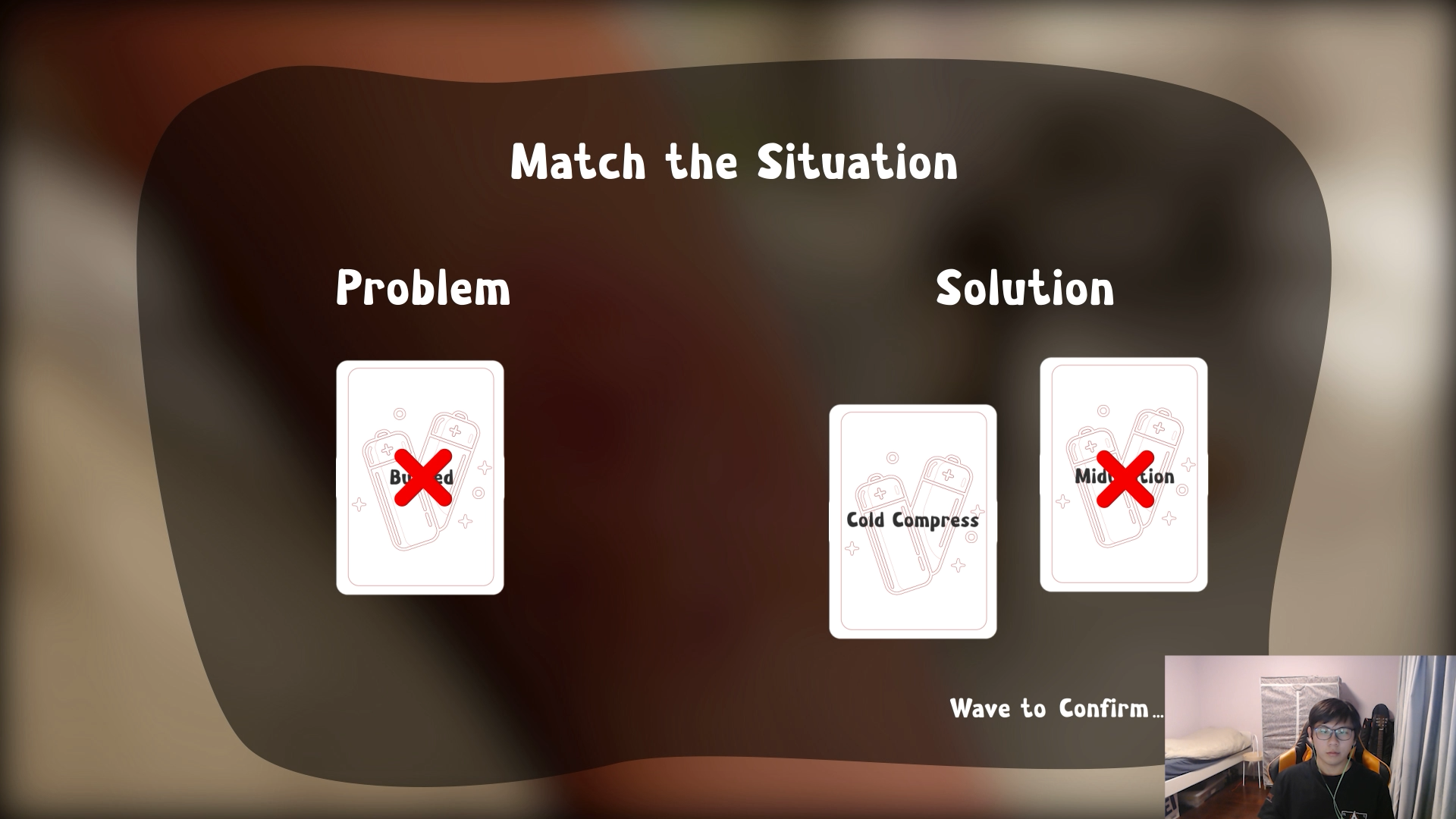
Aid Master
Aid Master, Serious Game, 2022
Personal Project
Research
Aid Master is an educational game that promotes first-aid knowledge. By telling vivid stories in the form of live shooting to heighten players’ immersion, and combine with motion-sensing input devices to learn knowledge of first aid.
To restore the process of first aid in real life as much as possible, each level's design adheres to the process of Story Telling, Matches the Situation, Show Tools, Restriction Display, Conducting Treatment, and Finish Treatment & Score Settlement.
Through this project, I became aware that as a medium, video games can integrate with a growing number of industries and fields, produce great significance for education, and impart practical knowledge to players.
WHAT I LEARNED FROM THIS PROJECT?
Guide and Feedback Design
Research
Montion Sensing Technology: Kinect
Inspiration
First Aid
Storyboard
Serious Game Design
Gameplay
Game's interactions are based on Kinect's motion sensing. The game compares the player's actions with a library of pre-made actions to determine the standard level of the actions.
Level & Storytelling
Each game level is a separate story that is told through videos, including scenarios, characters, and situations, to add to the player's sense of immersion.
Real-time Shooting
DaVinci Resolve
MAIN CONTRIBUTIONS
Serious Educational Game Design: Explored the utility of the game by publicizing first aid knowledge and techniques.
Film Production: Led the creation of live-action shooting scripts and storyboards, and directed the entire process of editing and animation production.
New Input Method Research: Implemented motion sensing capabilities for players utilizing Kinect technology.
KEY FEATURES
Inspiration & Research
The game was inspired by an incident in which I received first aid. I was riding my bike one night when I accidentally hit an obstacle, fracturing my orbital bone and causing me to lose consciousness. When I awoke, the doctor informed me that I was fortunate to receive assistance from a passerby who had learned first aid and assisted me in stopping the bleeding so that I could survive until the ambulance arrived. Because of this experience, I realized the importance of first aid and wanted to create a game to popularize first aid knowledge.
After deciding on the topic, I attended the American Heart Association's (AHA) first aid training and systematically learned about first aid and how to perform it.
1. Problem of Current First Aid Games
The biggest issue with existing first-aid games is the lack of interaction. Many games use the mouse and keyboard for control, which is contrary to reality.
During the survey, I discovered that the general public is unaware of it, and first aid courses are not widely available in schools. When an accident occurs and professional medical personnel do not arrive in time, the injured person's life may be jeopardized if proper and timely assistance is not provided.
The levels of the game are classified according to the situations encountered and are divided into four categories.
The game aims to let players experience the process of Encountering a Problem - Determining the Problem - Identifying the Tool - Thinking about the Solution - Trying to Solve it - Complete.
2. Advantages of Game Media
Motion Sensing
The game takes advantage of the ease of operation, interactivity, low cost, and ability to highly recreate situations to allow players to make their judgments and treatments to optimize the problems that exist in first aid training.
Game Process
a. Story Telling
Feedback & Achievement
a. Rating System
3. The Importance of First Aid
b. Match the Situation
Players need to judge the situation of the injured person, including the problems encountered and the solutions. The game uses a card game approach to increase the player's memory.
The game is scored according to the player's time spent, settlement, and degree of regulation of the operation after passing the level.
c. Show Tools
Each level provides the player with the tools that may be used for first aid in the current situation. There are correct and wrong choices.
d. Restriction Display
The player's HP, time, and other restrictions are the same as those in a realistic first-aid situation. If the player exceeds these restrictions, they will fail.
Live Action
Editing & Color Grading
Level Flow
e. Trying Treatment
Players need to choose the correct tools in the correct order for treatment. If there is a mistake in the process, the HP will be deducted and the game will explain why that is wrong.
f. Score Settlement
The game opts for the traditional photography method.
When compared to the use of 3D models, this can restore the situation of wounds and trauma location as realistically as possible, allowing players to make better decisions and bringing players empathy.
Special Effects Production
After level settlement, the score will be displayed and medals will be awarded.
b. Medal Display
Passing each first-aid level will generate medals. Players can collect medals in exchange for titles, UI skin, and others.
c. UI Feedback
Production




























